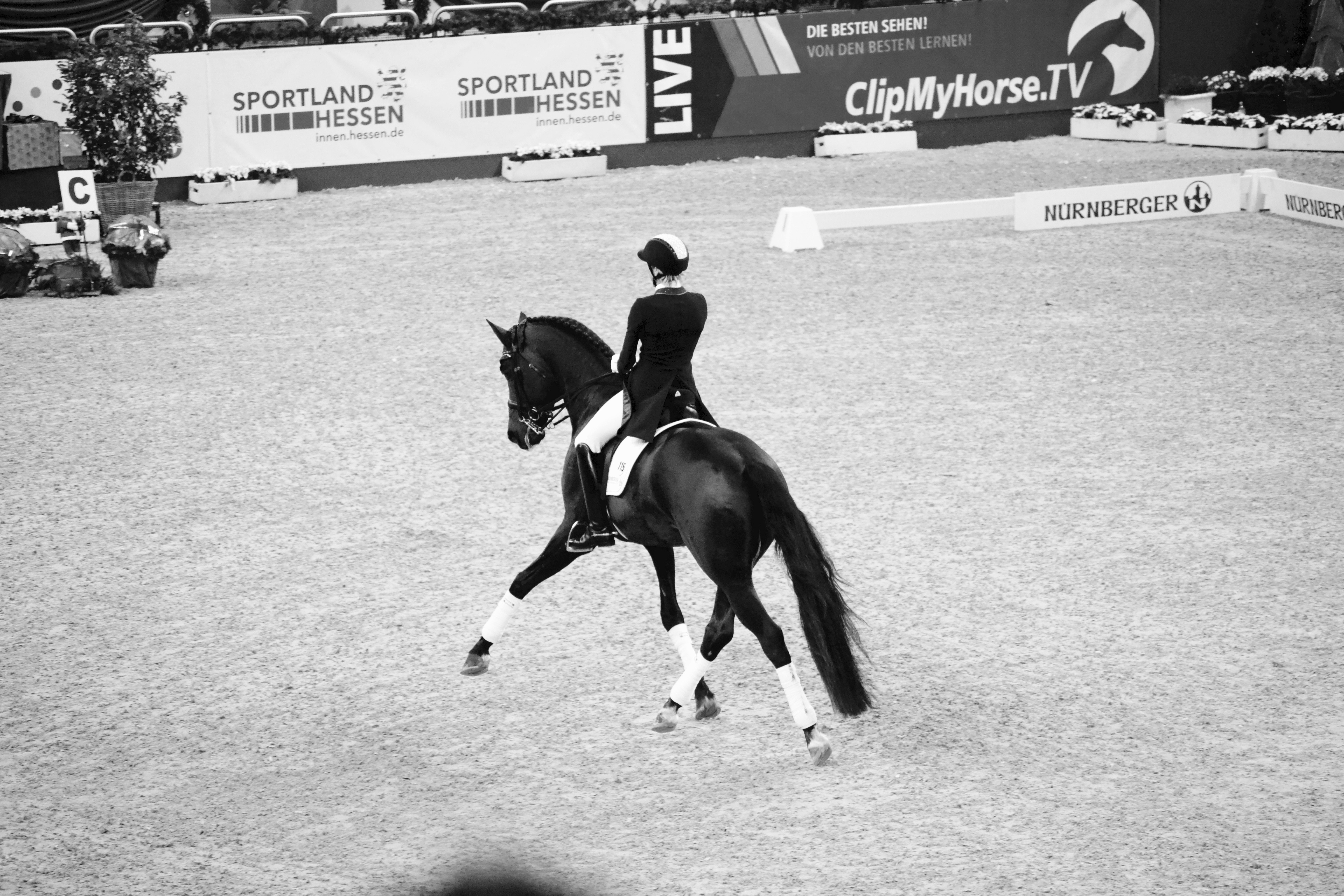Dressage (a French term, most commonly translated to mean "training") is a form of horse riding performed in exhibition and competition, as well as an art sometimes pursued solely for the sake of mastery.
As an equestrian sport defined by the International Equestrian Federation, dressage is described as "the highest expression of horse training" where "horse and rider are expected to perform from memory a series of predetermined movements."
Dressage training of horses is based on a progression of six steps developed by the German National Equestrian Foundation. This system is arranged in a pyramid or sequential fashion, with “rhythm and regularity” at the start of the pyramid and “collection” at the end. The training scale is helpful and effective as a guide for the training of any horse, but has come to be most closely associated with dressage. Despite its appearance, the training scale is not meant to be a rigid format. Instead, each level is built on as the horse progresses in training: so a Grand Prix horse would work on the refinement of the first levels of the pyramid, instead of focusing on only the final level: “collection.” The levels are also interconnected. For example, a crooked horse cannot develop impulsion, and a horse that is not relaxed will be less likely to travel with a rhythmic gait.
Dressage training for riders can start at a very early age, either (and most likely) with young riders learning with and from experienced trained dressage horses, or learning "together" with novice horses.
At the international level, dressage tests governed by the FEI are the Prix St. Georges, Intermediare I, Intermediare II, and Grand Prix. The dressage tests performed at the Olympic Games dressage competition are Grand Prix. This level of test demands the most skill and concentration from both horse and rider.
